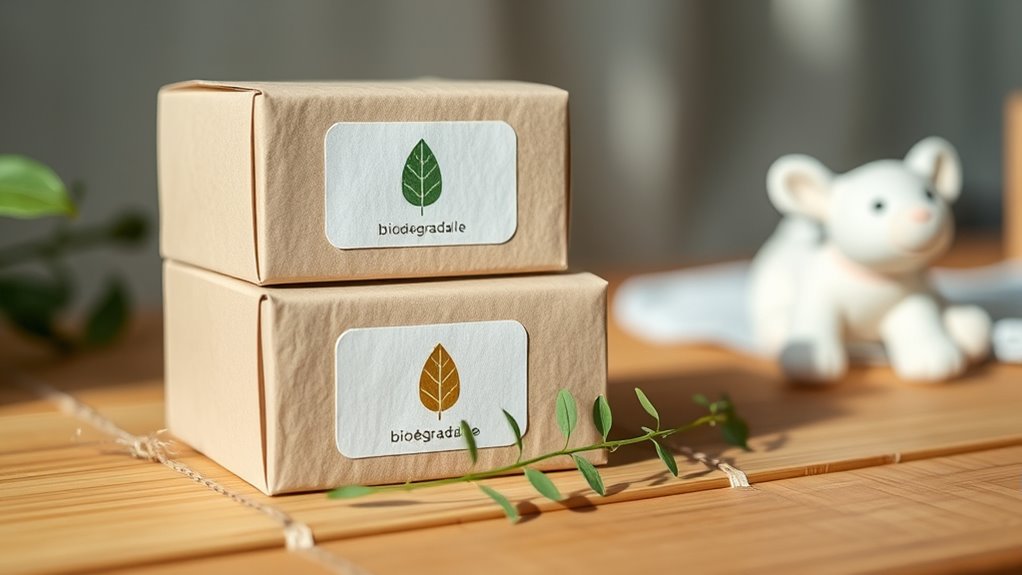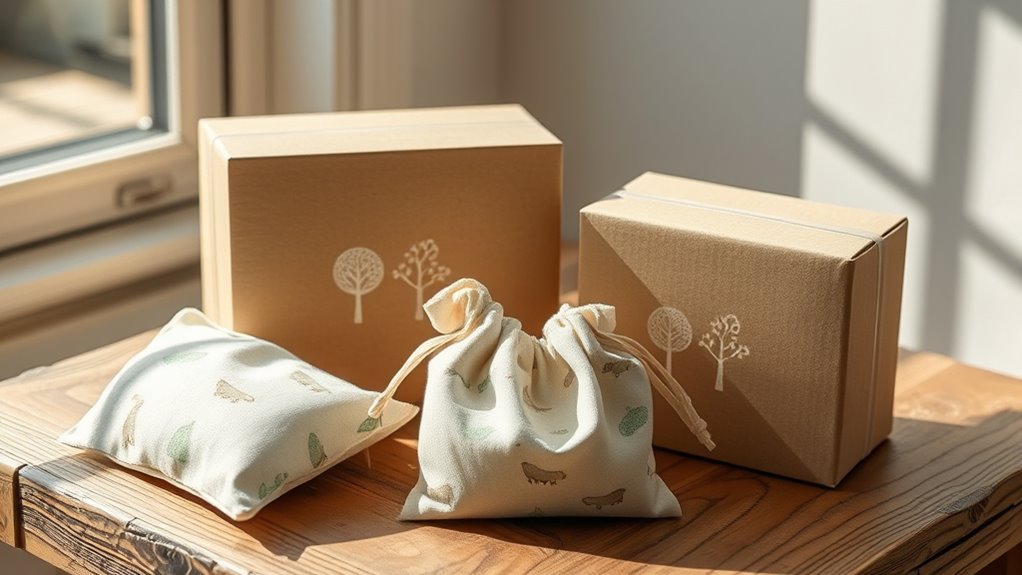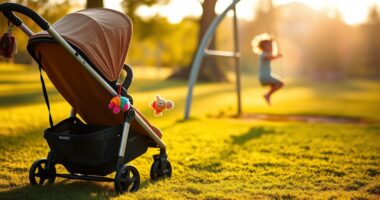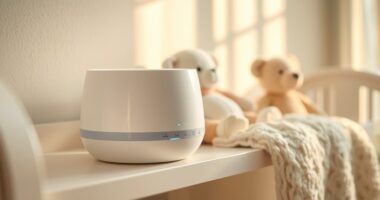Opting for sustainable packaging in baby products helps you cut down on waste and protect the environment. You can choose minimalistic designs, reusable containers, and eco-friendly materials sourced ethically. These solutions not only reduce landfill accumulation but also encourage responsible disposal and recycling habits. By supporting brands committed to sustainability, you’re promoting a healthier planet for future generations. If you want to discover more ways to make eco-friendly choices, keep exploring how packaging innovations are transforming the industry.
Key Takeaways
- Utilize biodegradable materials that naturally break down, minimizing landfill waste from baby product packaging.
- Design minimalistic, recyclable packaging that reduces material use and encourages responsible disposal.
- Incorporate reusable, refillable containers to promote multi-use and decrease single-use waste.
- Source eco-friendly, renewable materials free from toxic dyes to ensure safety and sustainability.
- Support brands committed to ethical practices and transparency, fostering industry-wide adoption of sustainable packaging.

As parents become more conscious of their environmental impact, sustainable packaging in baby products is gaining popularity. You want to make choices that protect your child’s future, and that includes opting for packaging that reduces waste and minimizes harm to the planet. One of the key ways brands are achieving this is by using biodegradable materials. These materials break down naturally within a short period, unlike traditional plastics that can linger for hundreds of years. When you choose products with biodegradable packaging, you’re supporting solutions that lessen landfill accumulation and prevent harmful chemicals from leaching into ecosystems. This shift not only benefits the environment but also aligns with your desire to give your child a cleaner, healthier world.
Choosing biodegradable packaging helps protect your child’s future and reduces environmental harm.
In addition, understanding the importance of color accuracy in packaging design can influence how appealing and effective eco-friendly packaging appears to consumers. Eco-friendly designs are integral to sustainable packaging and are crafted with both the planet and your child’s safety in mind. These designs often feature minimalistic packaging that uses less material without sacrificing functionality or appeal. For instance, companies are now opting for compact boxes, fewer layers, and reusable containers to cut down on excess waste. You’ll notice that many brands are also incorporating designs that are easy to recycle or repurpose, making it simple for you to dispose of packaging responsibly. This approach reduces the overall environmental footprint of baby products and encourages a circular economy where materials are reused rather than discarded.
Choosing products with eco-friendly packaging also means paying attention to the materials’ sourcing. Brands committed to sustainability often select renewable resources and avoid toxic inks or dyes that could harm your child or the environment. When you pick items with eco-conscious designs, you’re supporting companies that prioritize transparency and ethical manufacturing practices. This not only helps reduce pollution but also promotes a shift toward more sustainable industry standards.
Furthermore, sustainable packaging innovations are making it easier for you to be environmentally responsible without sacrificing convenience. For example, some brands now offer refillable or multi-use containers that can be reused for different purposes, reducing single-use waste. Others incorporate biodegradable wraps and cushioning materials that decompose quickly after disposal. By choosing such products, you’re actively reducing your household waste and setting a positive example for your family and community.
Frequently Asked Questions
Are Biodegradable Baby Packaging Materials Safe for Infants?
Biodegradable plastics used in baby packaging are generally safe for infants when made from non-toxic, food-grade materials. You should always check labels to confirm they meet safety standards, as infant safety is a top priority. While biodegradable options reduce environmental impact, it’s important to verify that they don’t contain harmful chemicals. When in doubt, consult your pediatrician to ensure the packaging is suitable for your baby’s safety.
How Can Parents Identify Eco-Friendly Packaging at Checkout?
Like finding a needle in a haystack, spotting eco-friendly packaging can be tricky. Look for clear recyclable symbols on the label—these indicate the packaging is recyclable or compostable. Pay attention to packaging color codes; green or earthy tones often signify eco-friendliness. By checking these signs at checkout, you can confidently choose sustainable options, making a positive impact on the planet and your baby’s future.
What Certifications Ensure Sustainable Packaging Claims Are Trustworthy?
You can trust sustainable packaging claims by looking for certifications from reputable programs that follow eco label standards. Certification programs like FSC, FSC Mix, and the USDA Organic guarantee packaging meets strict environmental criteria. When shopping, check for these labels on products, as they verify that the packaging aligns with trustworthy eco standards. This way, you confidently choose options that genuinely support sustainability efforts.
Can Sustainable Packaging Affect the Shelf Life of Baby Products?
Yes, sustainable packaging can affect the shelf life of baby products if packaging durability isn’t preserved or if material compatibility issues arise. You need to guarantee that eco-friendly materials provide sufficient protection and maintain product integrity over time. Properly selected sustainable packaging minimizes risks like contamination or spoilage, so always verify that it offers adequate durability and compatibility with the product to keep it fresh and safe for your little one.
Are There Cost Differences Between Sustainable and Traditional Packaging Options?
You might find that sustainable packaging often costs more upfront, but it’s worth the investment. The cost comparison varies depending on materials and design, but you typically pay a premium due to eco-friendly sourcing and production. This impacts your supply chain, sometimes making it pricier or more complex. Still, considering the environmental benefits and potential consumer appeal, it’s a smart move that can pay off in the long run.
Conclusion
By choosing sustainable packaging for baby products, you’re planting seeds for a greener future. Every small act is like watering a tree—growing a healthier planet for your little one to thrive in. When you opt for eco-friendly options, you’re not just reducing waste; you’re shaping a legacy of care and responsibility. Together, your choices can turn the tide, making sustainability the foundation on which future generations can flourish.








